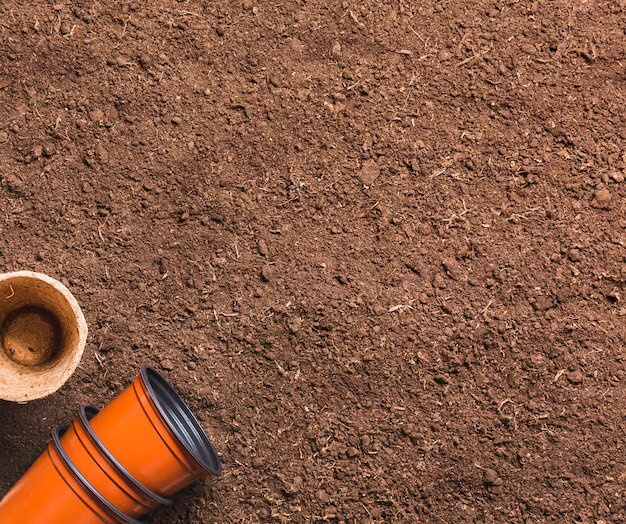What Lies Beneath: Unraveling the Composition of Top Soil
The composition of topsoil is a fascinating tapestry of minerals, organic matter, and microorganisms that collectively contribute to the health and fertility of your garden. Understanding the intricate balance of sand, silt, and clay particles within topsoil is essential for gardeners seeking to create an optimal environment for plant growth. Delving into the secrets of this hidden world beneath our feet opens the door to informed decisions about soil amendments and cultivation practices.
How to Assess Top Soil Quality: A Gardener's Guide
Assessing the quality of topsoil is a crucial skill for any gardener. This involves a multifaceted approach, considering factors like texture, color, and structure. Through hands-on techniques such as the ribbon test and simple observation, gardeners can determine the soil's drainage capacity and nutrient-holding potential. Additionally, soil testing kits and professional services can provide valuable insights into pH levels and nutrient concentrations, guiding gardeners in making informed decisions about amendments and fertilization practices.
Why Top Soil Matters: The Foundation of a Thriving Garden
Top soil is the foundation upon which successful gardens are built. Beyond providing physical support for plants, top soil serves as a reservoir for essential nutrients and water. Its role in fostering a vibrant soil microbiome is equally critical, influencing nutrient cycling and disease suppression. Recognizing the pivotal role of top soil underscores its significance in creating a resilient and flourishing garden ecosystem. A healthy layer of topsoil promotes robust plant growth, increased water retention, and overall garden sustainability.
Tips for Top Soil Success: Enhancing Fertility and Structure
Achieving top soil success involves implementing practical tips to enhance fertility and structure. Incorporating organic matter through composting, cover cropping, and mulching contributes to improved structure and nutrient availability. Crop rotation and proper watering practices further promote health and prevent issues such as compaction. Understanding the specific needs of plants and adapting cultivation practices accordingly ensures that top soil remains a productive and nurturing medium for sustained gardening success.
Types of Topsoil: Choosing the Right Blend for Your Garden
Different gardening scenarios call for specific types of topsoil. Sandy soils, rich in drainage but low in nutrient retention, suit certain plants, while clayey soils, with excellent nutrient-holding capacity, may be preferred for others. Loamy soils, striking a balance between sand, silt, and clay, are often considered ideal for a wide range of plants. Customizing topsoil with organic amendments can enhance its quality, promoting microbial activity and nutrient availability.
Digging Deeper into Nutrients: Understanding the Soil Food Web
The food web is a complex network of interactions among microorganisms, fungi, and other soil-dwelling organisms that play a vital role in nutrient cycling. Delving into this intricate ecosystem reveals the symbiotic relationships that exist between plants and the organisms. Beneficial bacteria and mycorrhizal fungi, for instance, assist in nutrient absorption by plants, enhancing their resilience to stress and diseases.
Balancing Act: Maintaining pH Levels in Your Top Soil
pH levels significantly impact plant nutrient availability, and maintaining the right balance is a crucial aspect of top soil management. Different plants thrive in different pH ranges, so understanding and adjusting soil acidity or alkalinity accordingly is essential. Lime can be added to raise pH in acidic soils, while sulfur can be used to lower pH in alkaline soils. Regular soil testing helps gardeners monitor pH levels and take corrective actions, ensuring an environment where plants can efficiently absorb the nutrients they need for optimal growth.
The Role of Organic Matter: Building a Healthy Soil Ecosystem
Organic matter is the lifeblood of it, contributing to its structure, water retention, and nutrient content. Decomposed plant and animal residues, along with compost, are valuable sources of organic matter that enhance fertility. Beyond its role in providing nutrients, organic matter acts as a binding agent, improving structure and reducing erosion.
Conclusion
In the intricate tapestry of gardening, understanding the secrets of these emerges as a fundamental key to success. As gardeners, we become stewards of this vital resource, armed with knowledge that transforms the act of cultivation into a harmonious collaboration with nature, ensuring lush gardens that stand the test of time. Armed with this knowledge, gardeners can create nurturing environments, fostering robust growth and sustaining the delicate balance of nature within the soil.


No comments yet